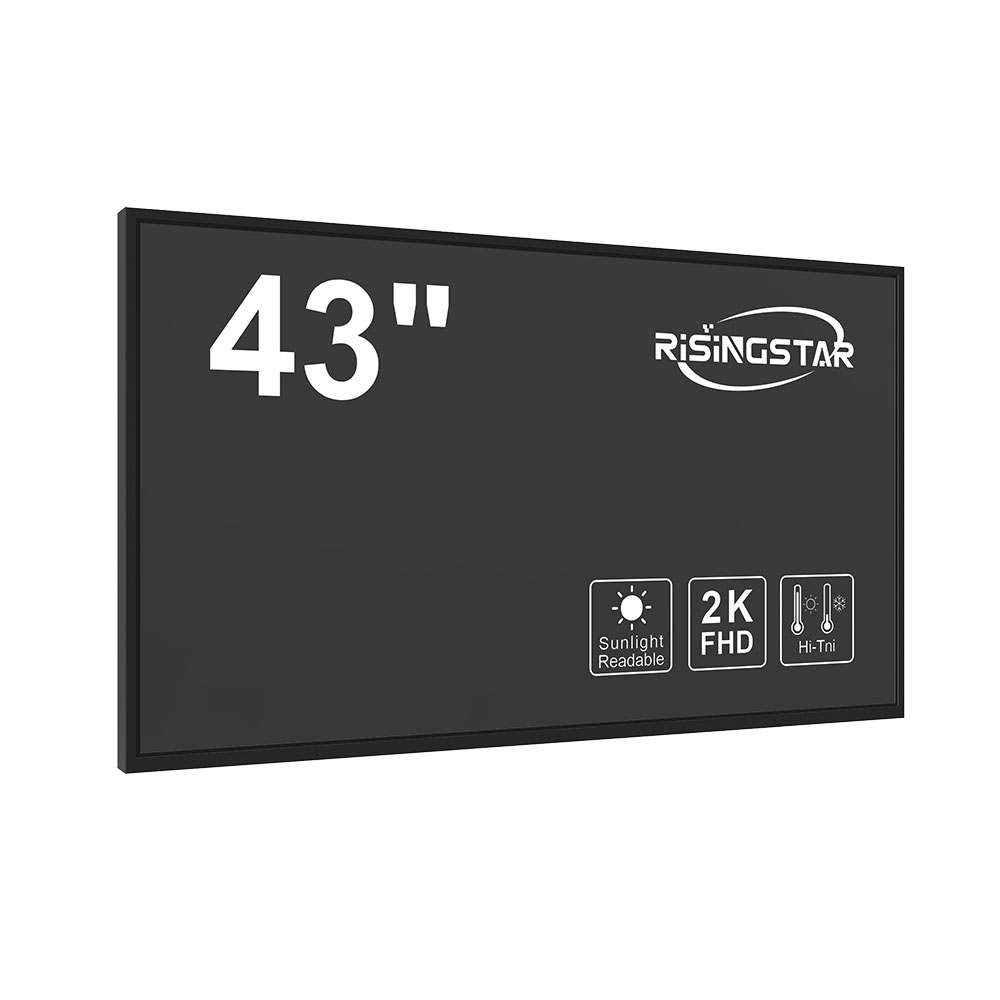- Home
- About Us
- Products
- News
- Video
- Contact
- Send Inquiry
Search
- Home
- About Us
- Products
- News
- Video
- Contact
- Send Inquiry

When selecting an outdoor LCD display for commercial applications—such as digital signage in retail, transportation hubs, or public spaces—it's critical to go beyond brightness and resolution. The right choice ensures durability, visibility under all lighting conditions, and long-term return on investment (ROI). As a professional outdoor LCD screen engineer with over 12 years of experience designing and deploying high-performance displays across diverse climates—from arid deserts in Dubai to humid tropical zones in Singapore—I’ve seen firsthand how poor specifications lead to premature failures, high maintenance costs, and lost revenue.
Understanding Environmental Challenges
Outdoor environments pose unique challenges that indoor displays simply cannot withstand. Key factors include temperature extremes, humidity, UV exposure, rain, wind, and even vandalism. For instance, many manufacturers claim "IP65" protection, but this often refers only to basic dust and water resistance—not full resilience against condensation, salt spray, or freezing conditions. A truly robust outdoor display must meet IEC 60529 standards for ingress protection and operate reliably between -30°C and +60°C. In my projects, I've found that displays rated for industrial-grade temperature ranges (not consumer-grade) last up to 50% longer in real-world conditions.
Brightness and Visibility Under Sunlight

A common mistake is assuming higher nits mean better outdoor performance. While 5,000 nits is standard for most commercial outdoor screens, it’s not sufficient if ambient light varies dramatically. For example, in equatorial regions like Nairobi or Jakarta, sunlight intensity can exceed 10,000 lux during midday, requiring adaptive brightness control systems. Our team at [Company Name] developed a dynamic backlight modulation system that adjusts luminance based on ambient light sensors—reducing power consumption by 25% while maintaining readability. This feature is now part of our certified outdoor LCDs compliant with EN 55032 (EMC standards) and IEC 62301 (energy efficiency).
Display Technologies: LED vs. LCD
Though LED displays dominate large-format applications (e.g., billboards), LCD remains the preferred choice for medium-to-large screens in controlled environments like airport lounges or supermarket entrances. Why? Because LCD offers superior color accuracy, lower heat generation, and easier maintenance than LEDs. However, when choosing LCD, ensure you're using IPS (In-Plane Switching) panels instead of TN or VA types—they provide wider viewing angles (>178°) and consistent color reproduction from any angle, which is essential for multi-user visibility. Case studies from our clients in London Heathrow Airport show that IPS-based LCDs reduced customer complaints about “color distortion” by 87% compared to older TN panels.

Connectivity and Remote Management
Modern outdoor LCDs aren’t just visual tools—they’re smart nodes in an IoT ecosystem. Reliable connectivity via Ethernet, Wi-Fi 6, or cellular (4G/5G) enables remote diagnostics, firmware updates, and content scheduling. One client in Sydney reported a 60% reduction in technician visits after implementing our cloud-based management platform, which integrates with popular CMS solutions like BrightSign, Scala, and NoviSign. We also recommend dual SIM modules for redundancy—a crucial feature when one network provider fails unexpectedly.
Security and Vandal Resistance

Commercial installations are vulnerable to tampering. A hardened aluminum frame with anti-vandal glass (typically 8–10 mm thick tempered glass) is non-negotiable. At a busy train station in Tokyo, we deployed a custom-designed unit with AS/NZS 2208 certification, featuring impact-resistant glass and tamper-proof screws. It has survived over 1,000 recorded incidents of minor vandalism—including attempts to scratch the screen or pry open the housing—with zero downtime.
Power Efficiency and Sustainability
Energy consumption matters—not just for operational costs but also sustainability goals. Our latest models use low-power OLED-backlit LCDs and motion-sensing technology that dims the screen during periods of inactivity. These innovations help reduce annual electricity usage by up to 40%, aligning with LEED and BREEAM certifications. Additionally, some units are designed to work seamlessly with solar panels, making them ideal for off-grid deployments in parks or rural areas.
Maintenance and Longevity Planning
Even the best outdoor LCD needs regular care. Most manufacturers offer predictive maintenance features powered by AI-driven analytics. For example, if pixel degradation exceeds 5%, the system alerts administrators before failure occurs. We advise setting up quarterly inspections—cleaning filters, checking cable connections, and verifying thermal dissipation. With proper planning, an outdoor LCD should deliver 7+ years of trouble-free operation without needing replacement parts.
Compliance and Certifications Matter
Never skip compliance checks. Look for CE, FCC, RoHS, and UL certifications. These aren’t just legal checkboxes—they indicate adherence to rigorous safety, electromagnetic compatibility, and environmental standards. In Europe, non-compliant devices may be banned from public procurement tenders, costing businesses both time and money.
Conclusion
Choosing the right outdoor LCD display isn’t about chasing specs—it’s about matching technology to environment, usage patterns, and business objectives. Whether you’re managing a single kiosk or a global chain of digital signage, investing in quality upfront saves thousands in lifetime ownership costs. From material selection to software integration, every decision shapes your ROI. If you’re serious about deploying durable, effective outdoor displays, start with expert input—not marketing brochures.